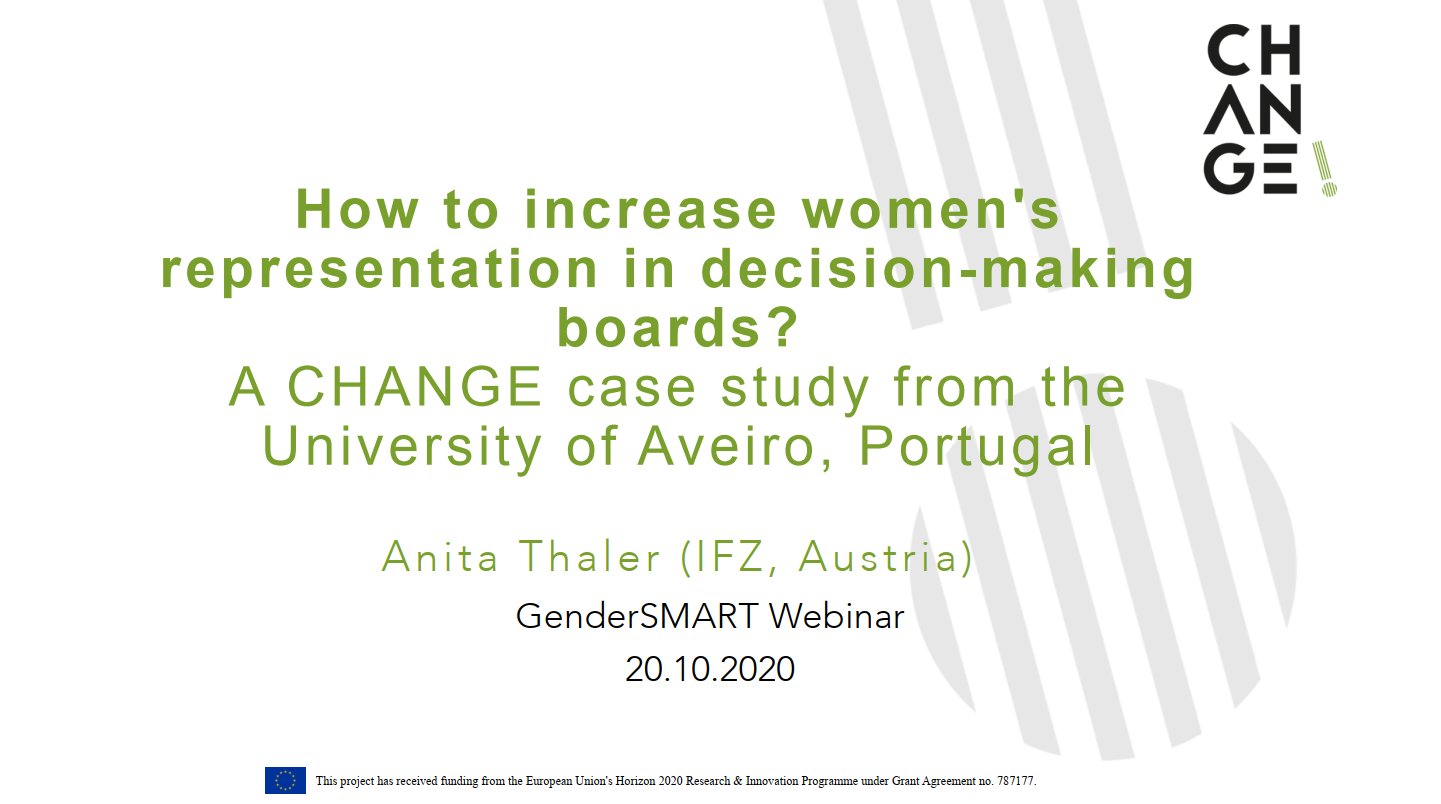How to increase women's representation in decision-making boards?
Focusing on this question, Anita Thaler (IFZ) presented insights from the CHANGE project and a case study from the University of Aveiro (provided by Teresa Carvalho and her team) at a webinar from sister project GenderSMART. On 20th October 2020 CHANGE and three other sister projects shared their experiences on "Taking action to improve women in leadership and decision-making — EU insights". Elisabeth Nagl from WWTF (GEECCO) talked about ‘Women in leading positions of research teams' and explained how pilot initiatives can help nudge RFOs into implementing gender equality measures. Maria Bustelo from UCM (SUPERA) discussed ‘The legislative base for parity in committees and the problems for implementing them, including the fierce resistances to positive actions here in Spain'. Concettina Marino from UNiRC (GEECCO) elaborated ‘Strategies implemented at UNIRC to increase the number of women into elected bodies and top-positions', and Jon Pizzaro Perez and Maria Lopez Belloso from UDEUSTO (GEARING ROLES) reflected on ‘Actions from GEARING ROLES WP 5 Leadership and Decision-making'.
In conclusion, structural changes in decision making boards and power relations can only be achieved, if good and trustful relationships with the top management of implementing institutions exist, if windows of opportunities are used wisely, and if knowledge is built up internally to avoid resistances. All these are basic principles of CHANGE: co-producing gender equality knowledge with transfer agents in the respective institutions, this led to positive examples like the Portuguese case study:
